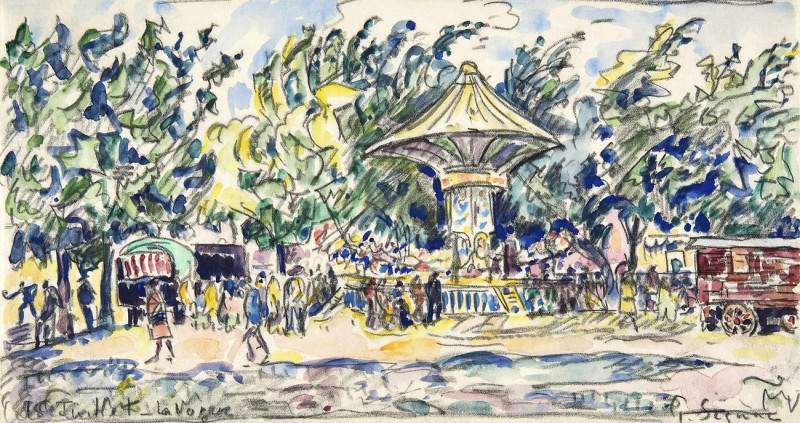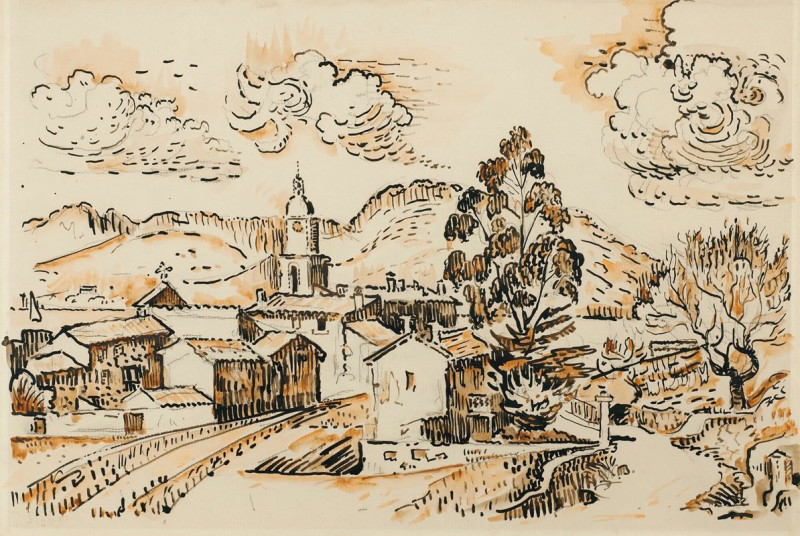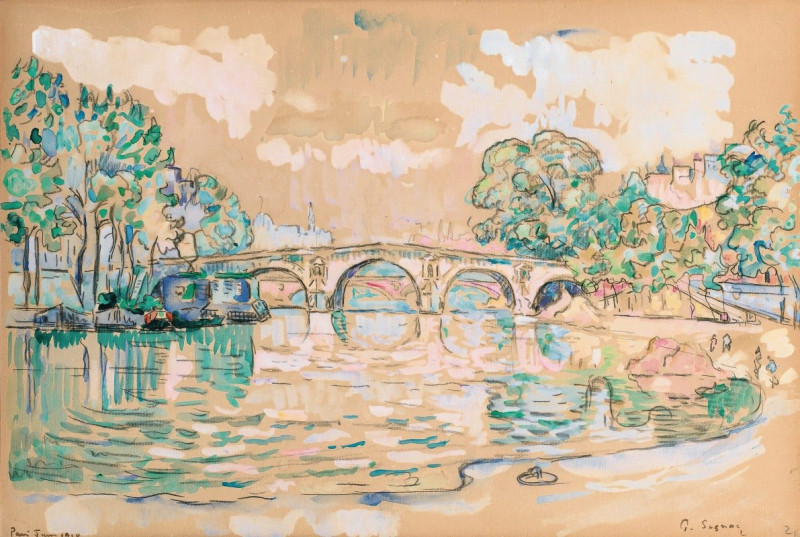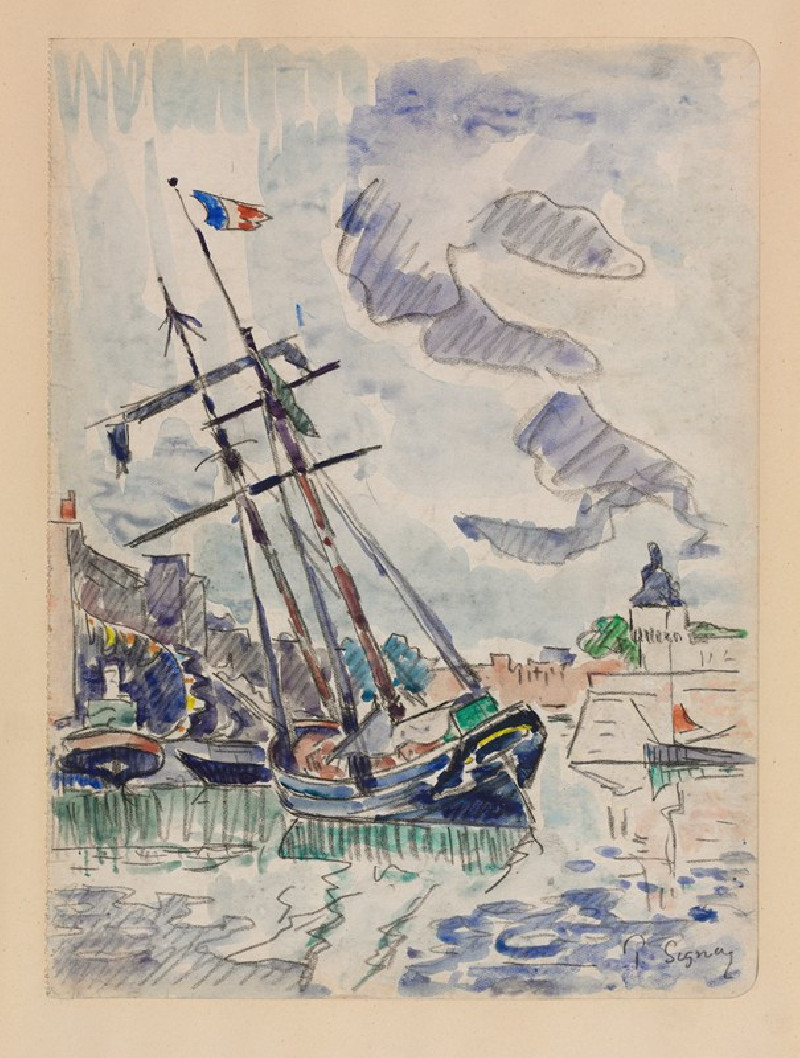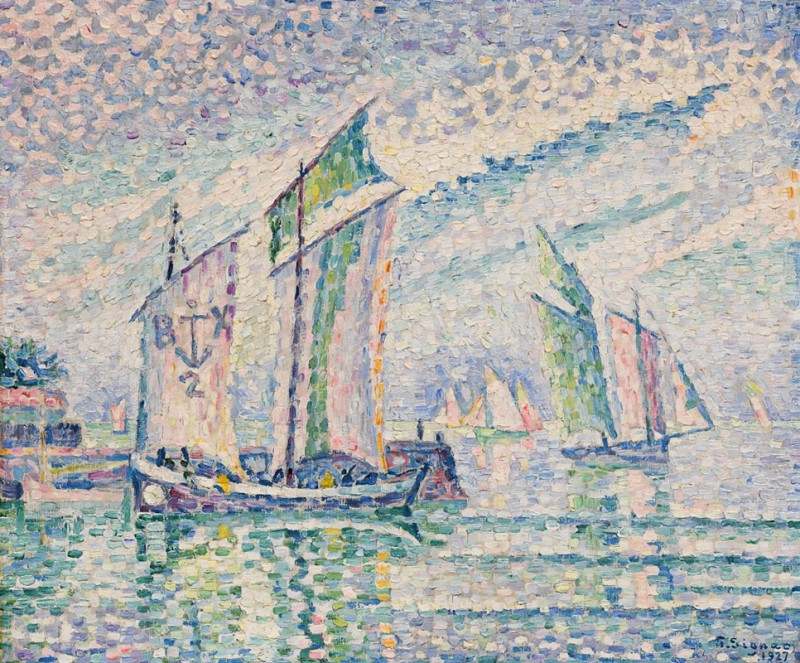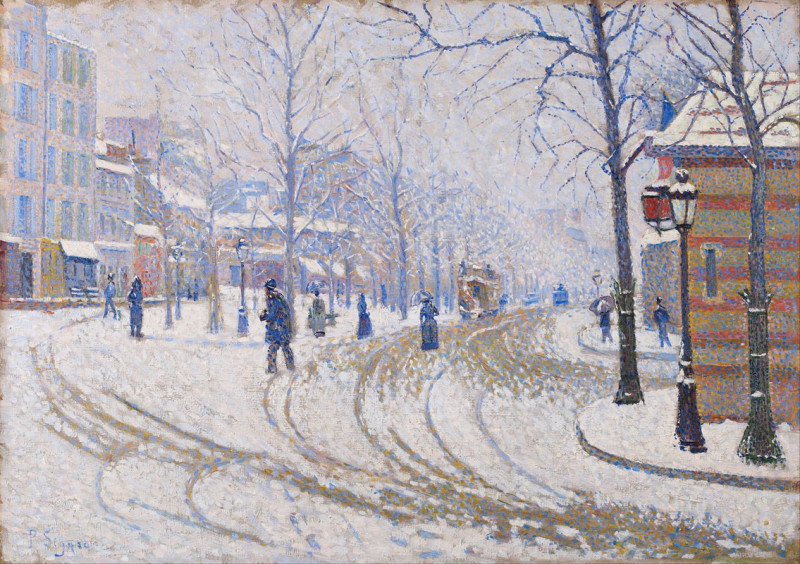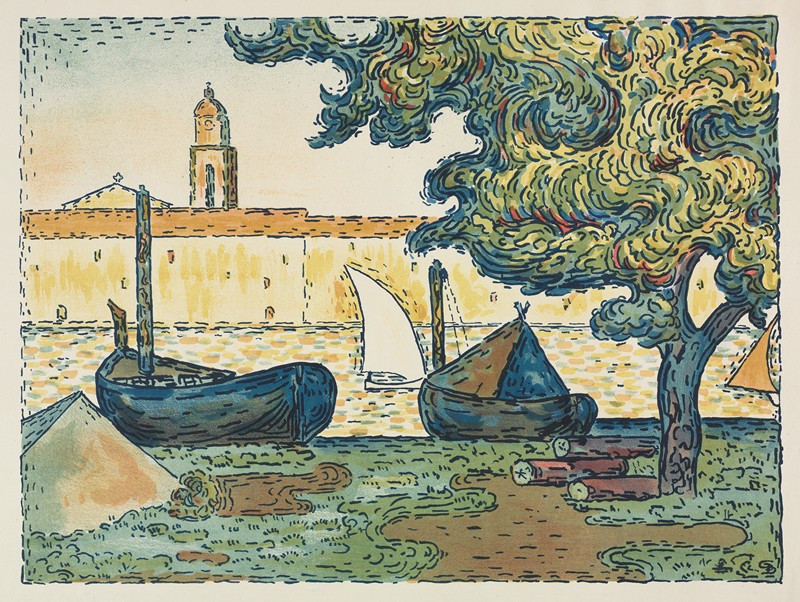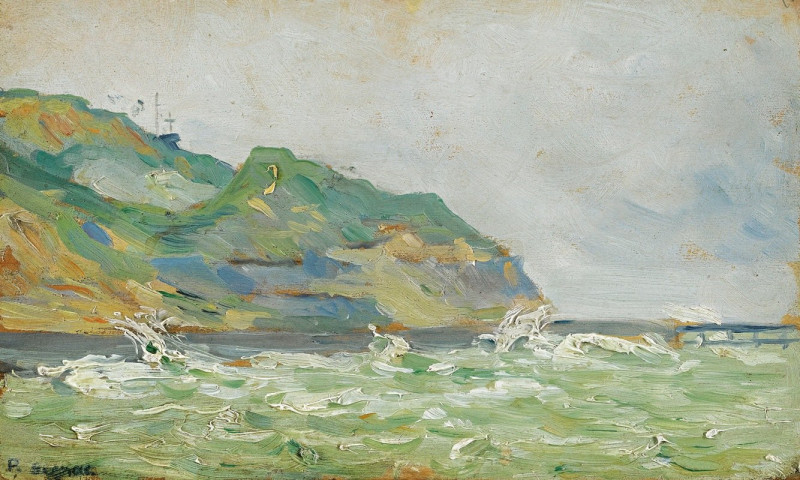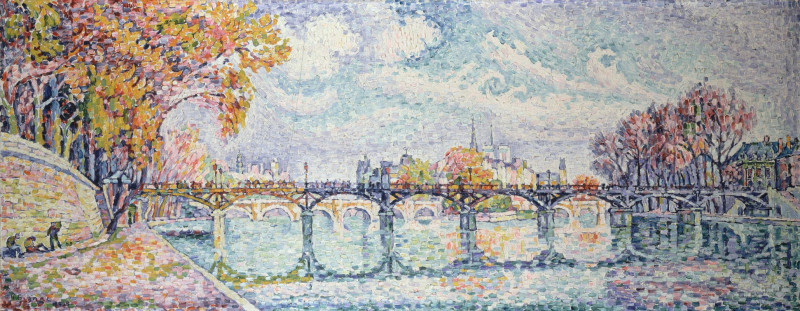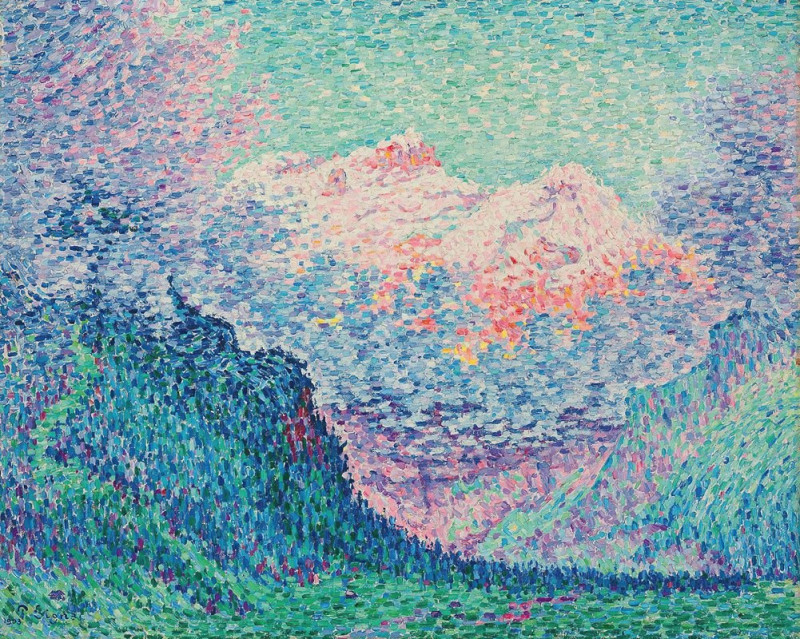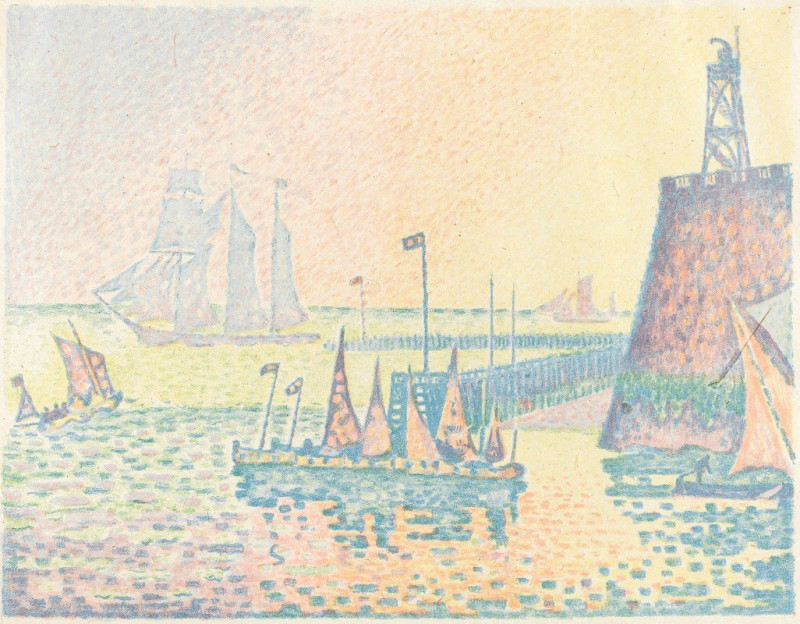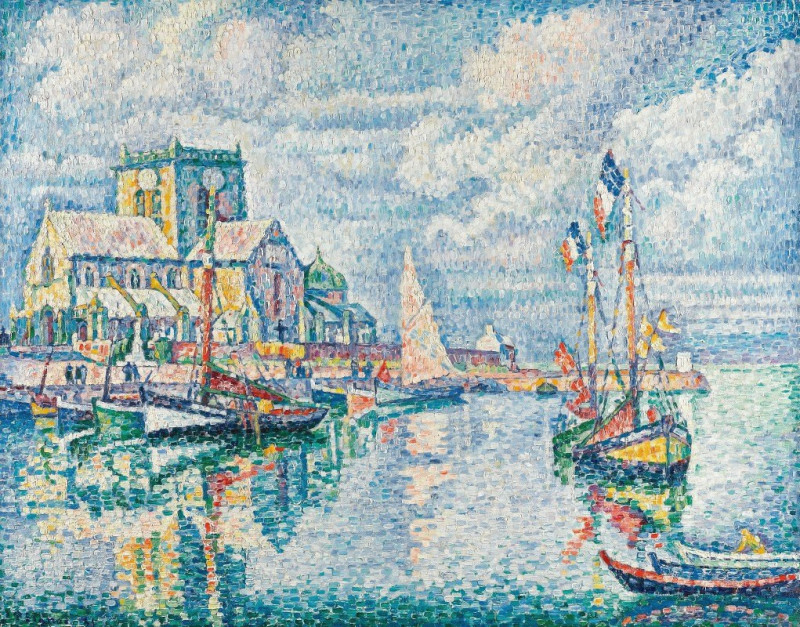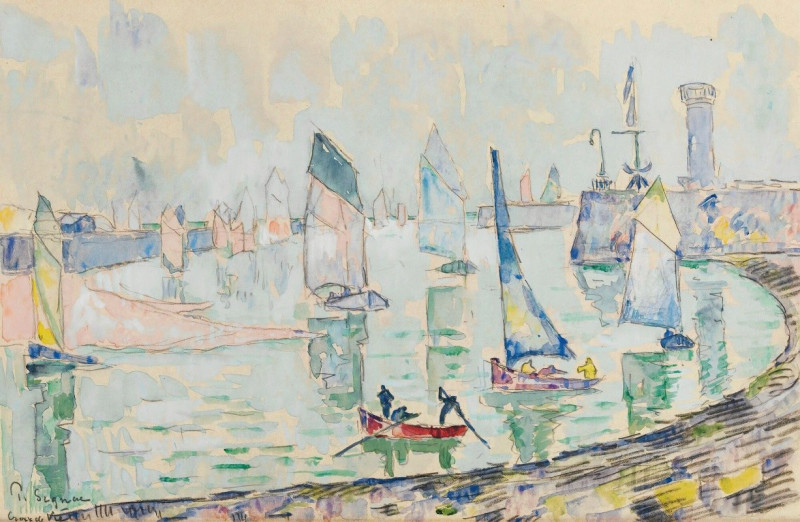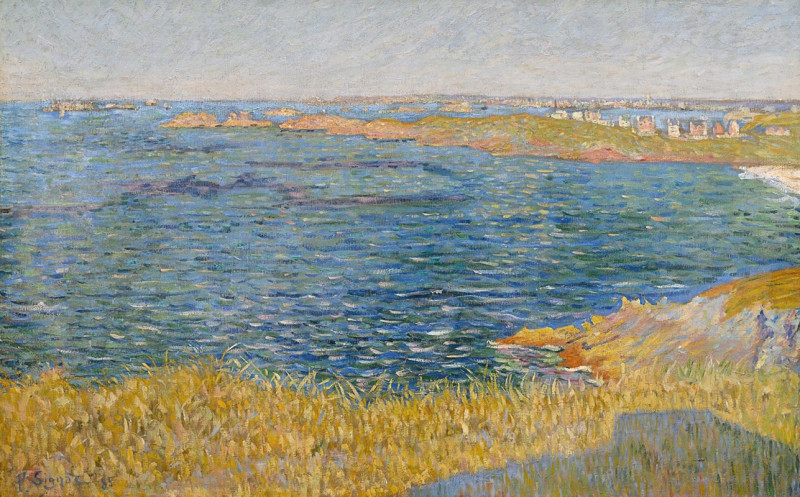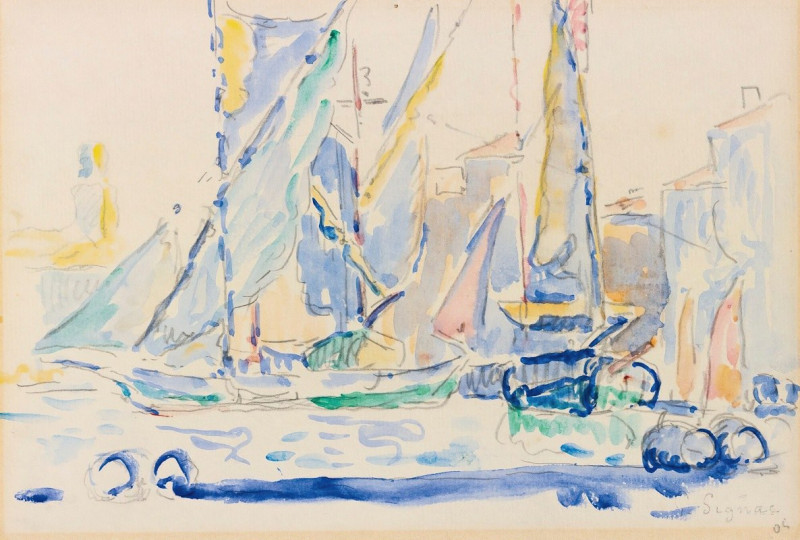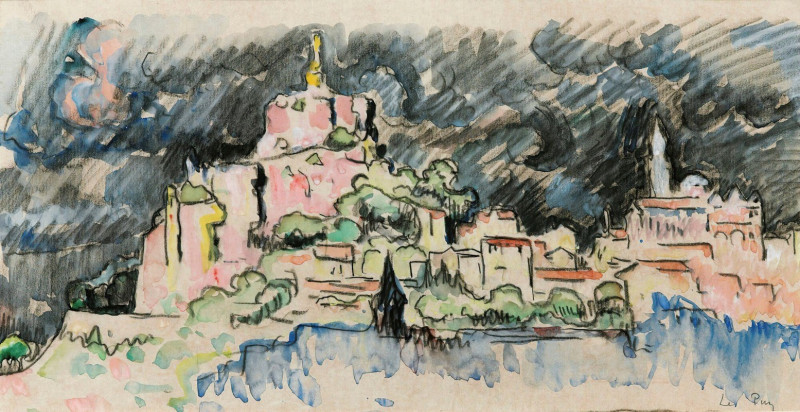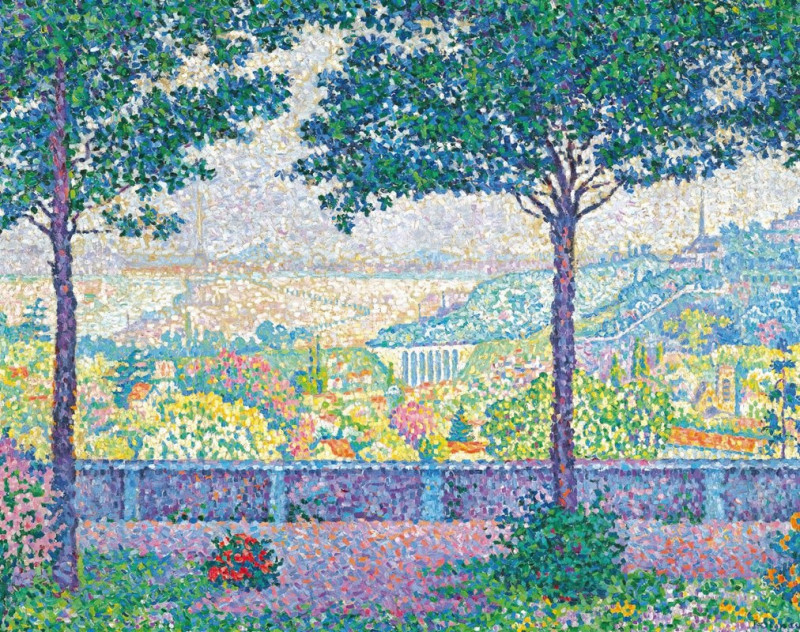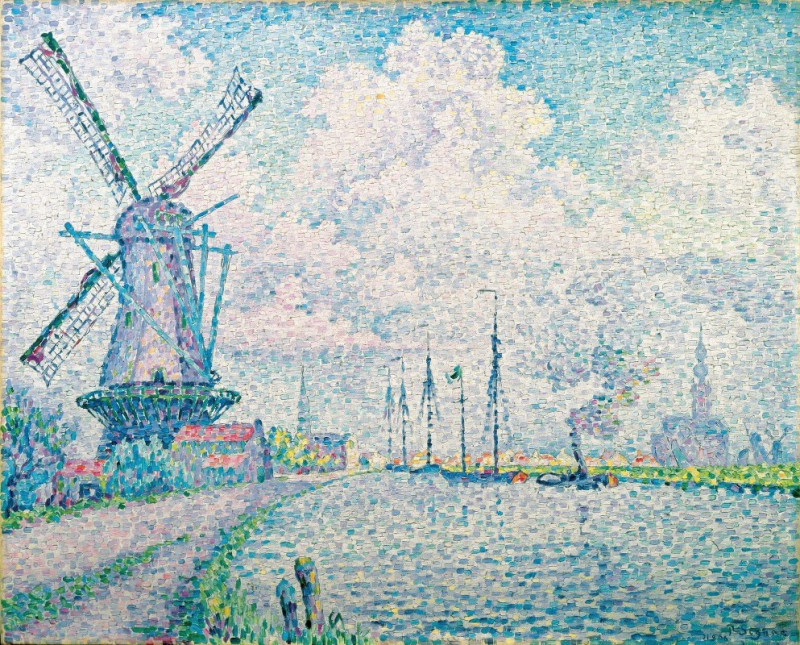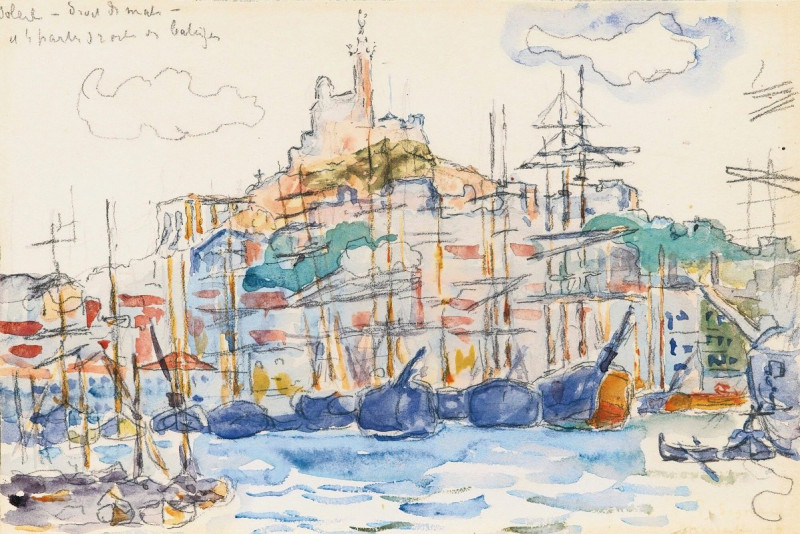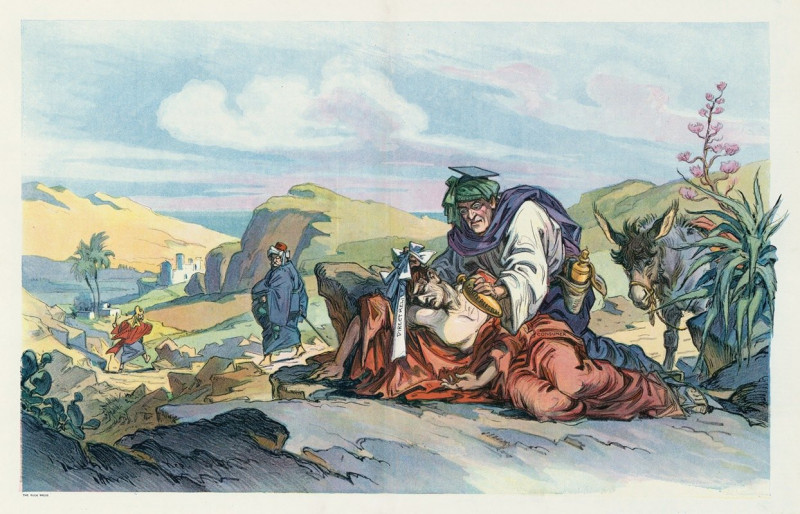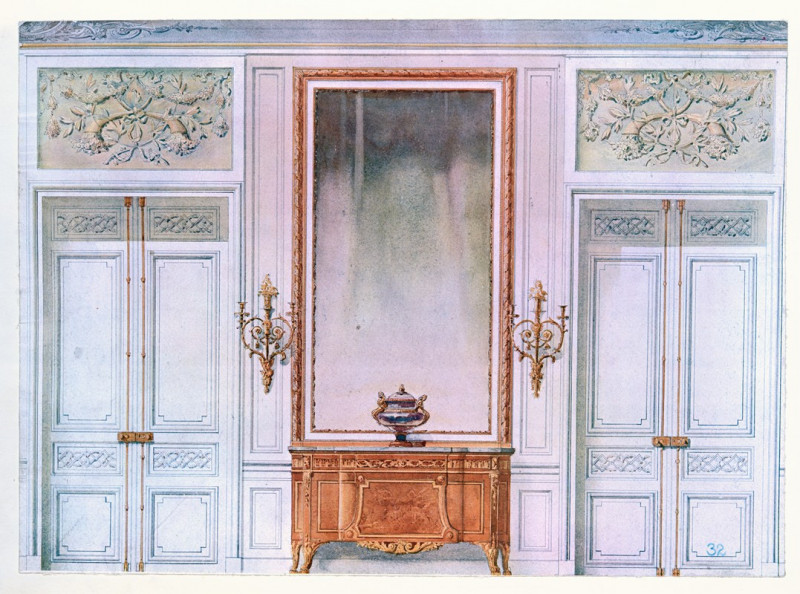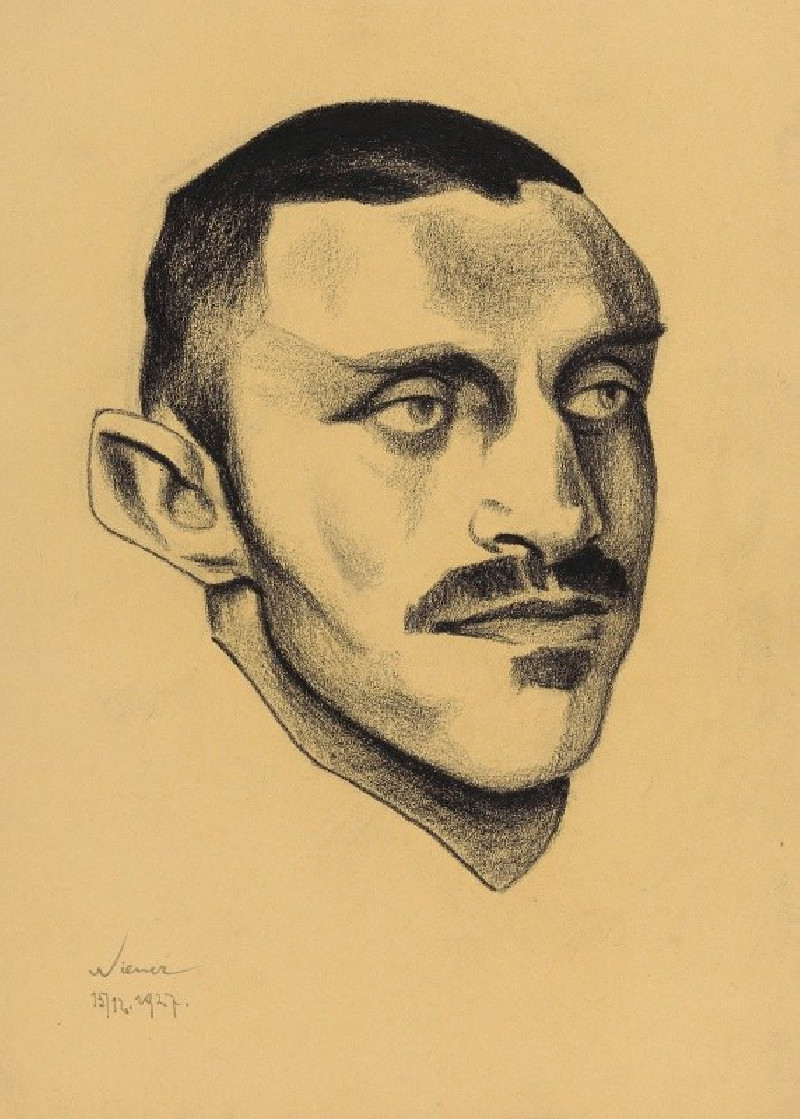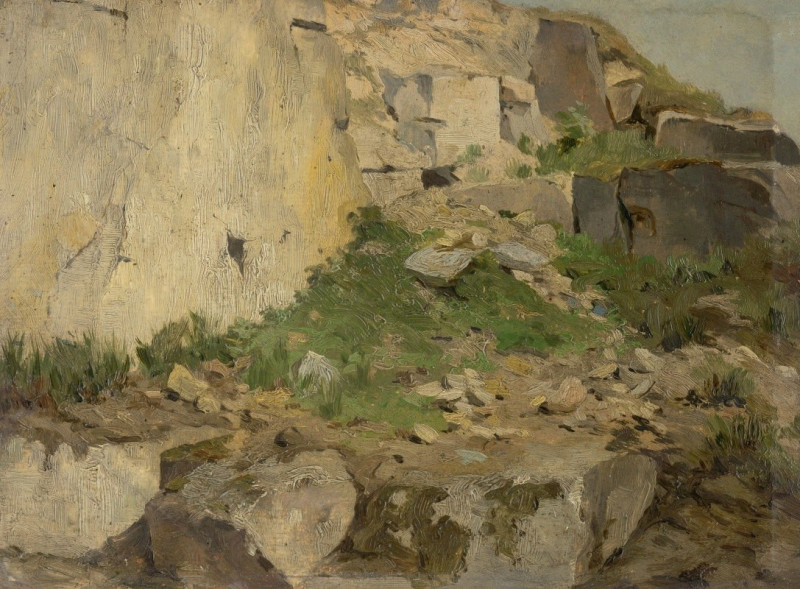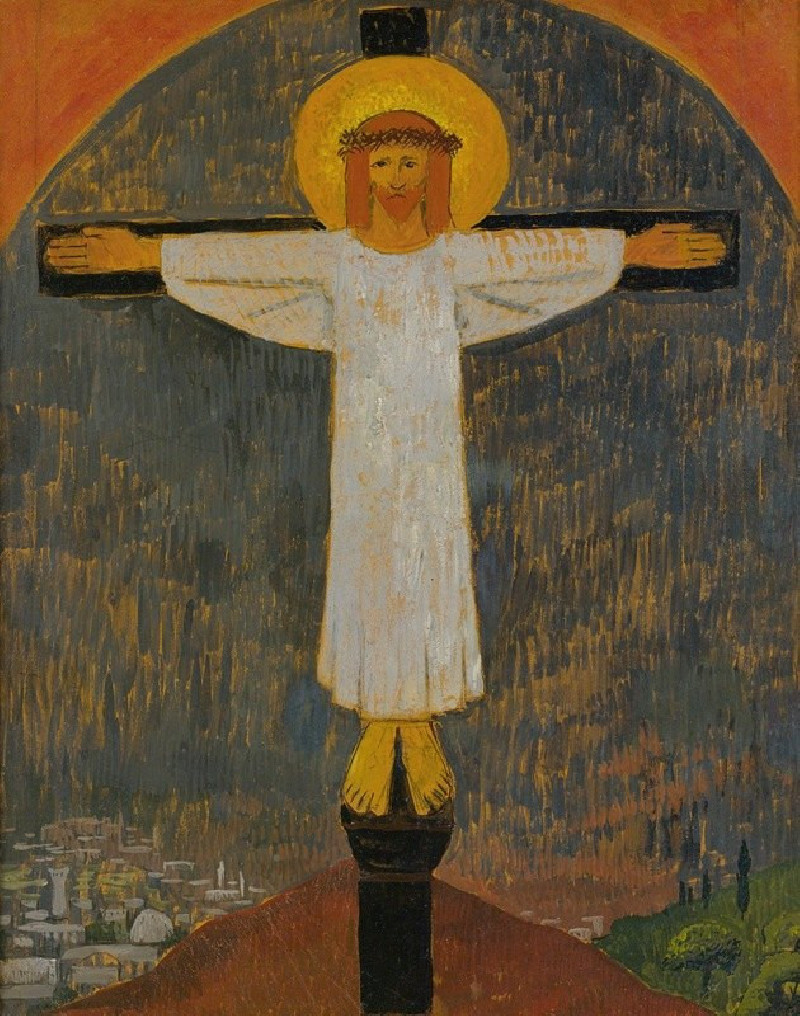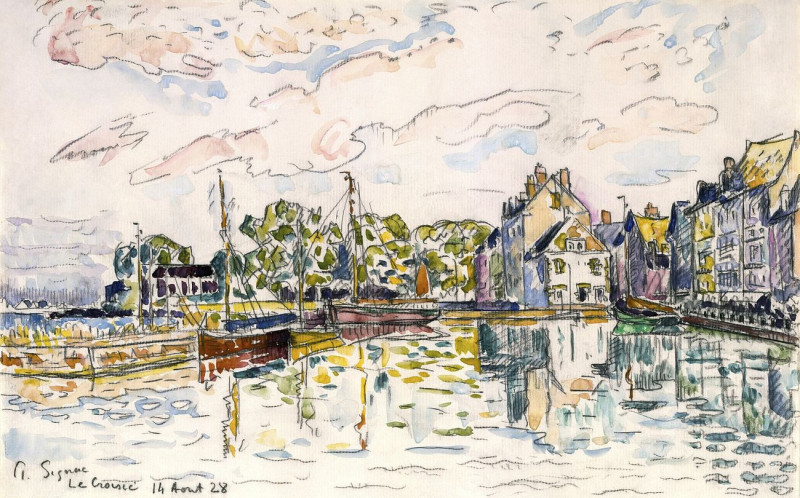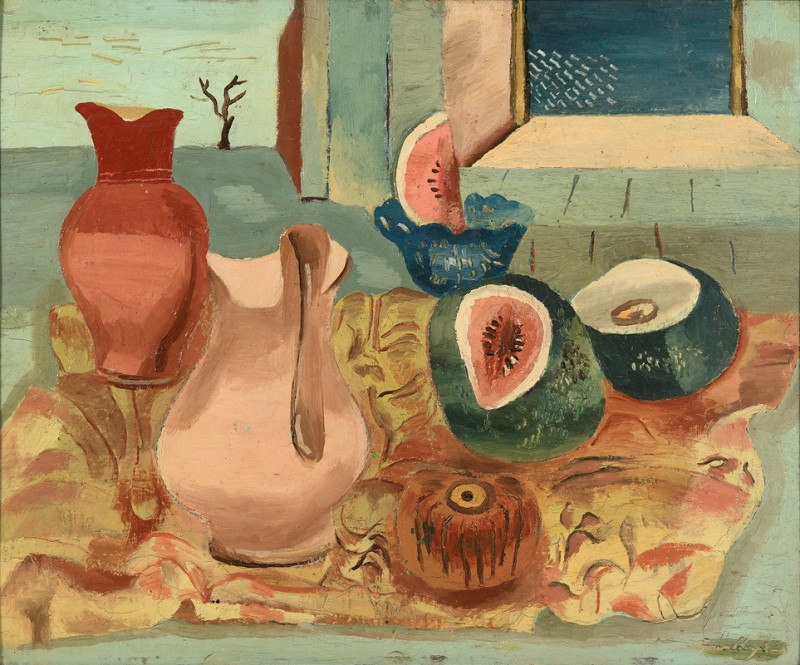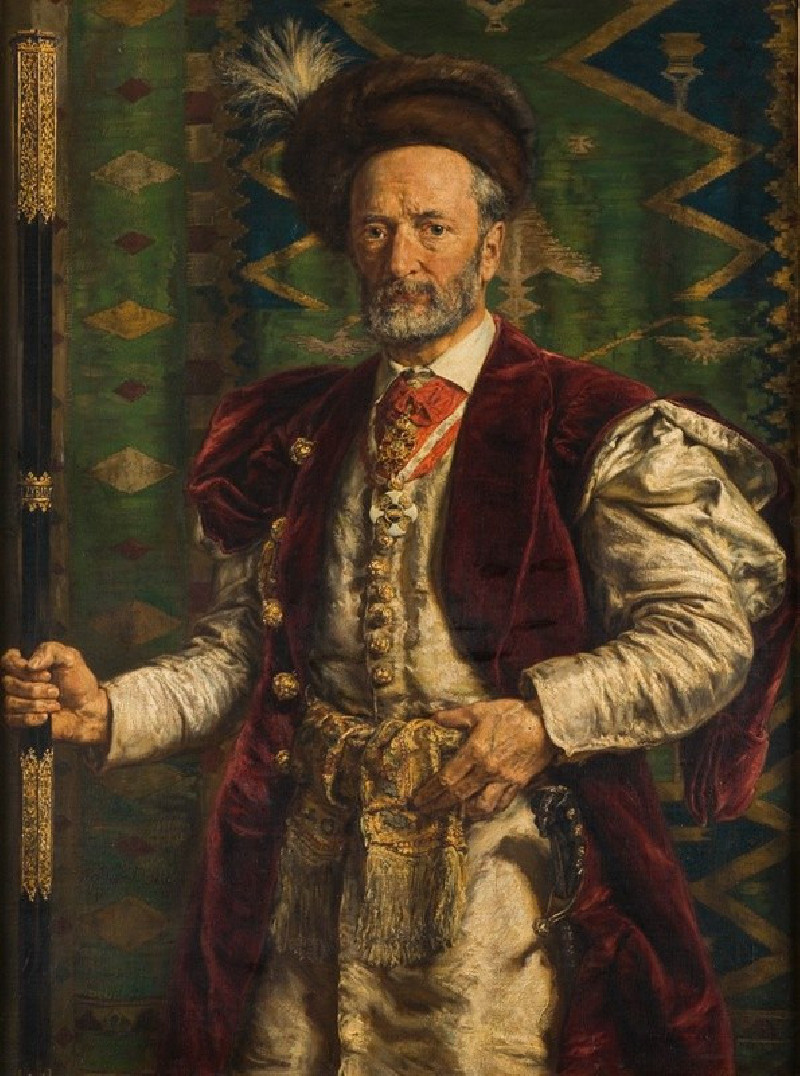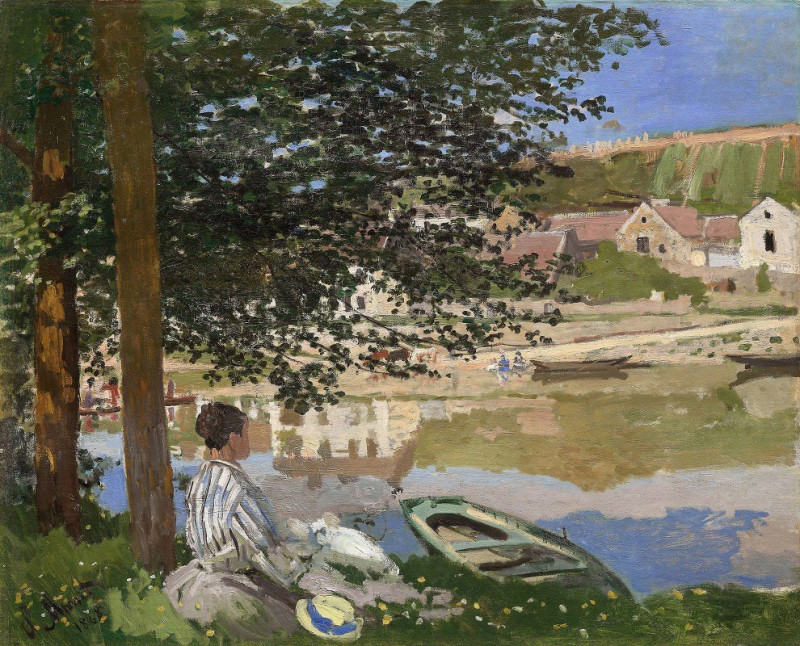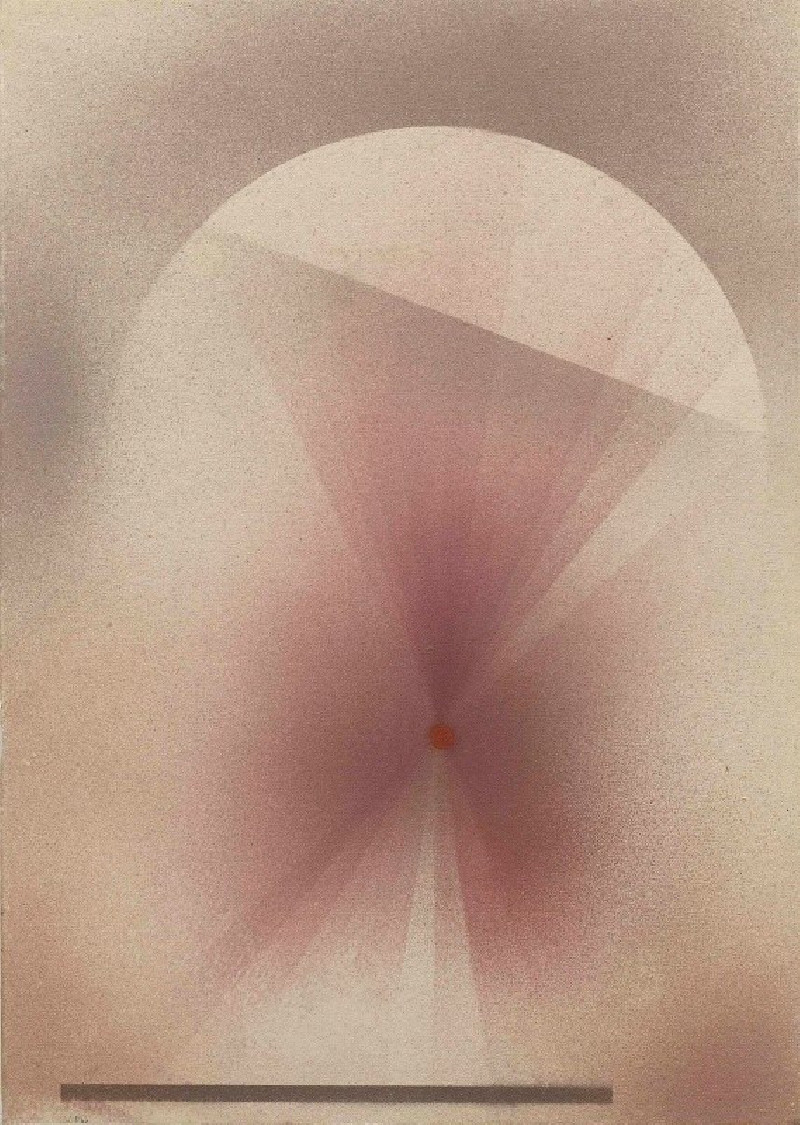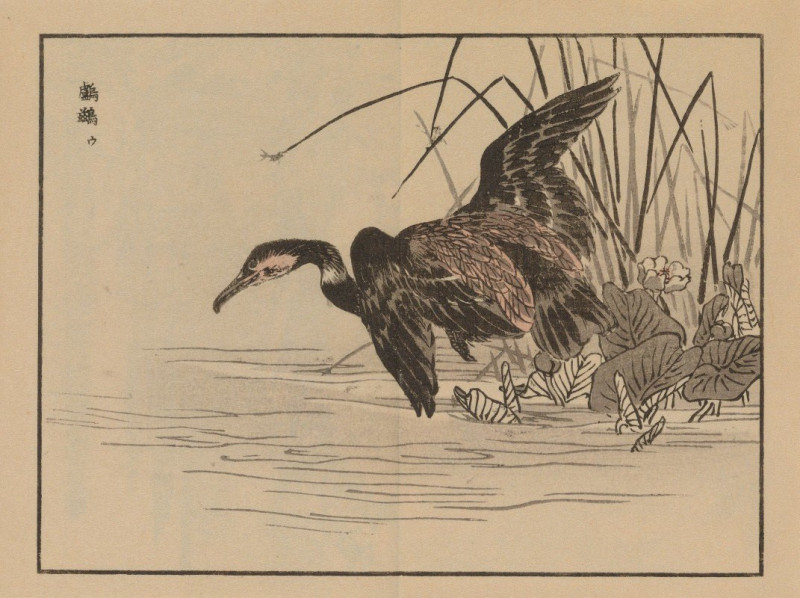Village Festival
Technique: Giclée quality print
Recommended by our customers
More about this artwork
This painting, "Village Festival" by Paul Signac, is a lively and colorful portrayal of a traditional village celebration. The scene is dominated by a central gazebo or bandstand adorned with festive decorations, around which the villagers gather, depicted in an array of vivid colors and dynamic brushstrokes. The surrounding landscape includes lush, leafy trees that seem to sway with the rhythm of the music, their green and blue tones interspersed with splashes of yellow, suggesting sunlight filtering through the leaves.The people are sketched in a lively, somewhat abstract manner, with quick strokes that capture the movement and energy of the festival atmosphere. Various figures can be seen: some are walking, some appear to be talking to each other, and others are gathered closely around the bandstand, possibly enjoying a performance.To the sides of the image, there are hints of village life continuing around the festival—structures that might be stalls or caravans, suggesting the presence of food vendors or games, adding to the festive atmosphere. The entire scene is vibrant, with the artist using loose and expressive brushwork that gives a sense of immediacy and spontaneity, inviting the viewer to feel as if they are part of the celebration. This painting not only captures the joy and community spirit of a village festival but also showcases Signac’s skill in using color and form to depict a dynamic gathering.
Delivery
Returns
Paul Signac (1863-1935) was a French Neo-Impressionist painter. Together with Georges Seurat, Signac developed the Pointillism style. He was a passionate sailor, bringing back watercolor sketches of ports and nature from his travels, then turning them into large studio canvases with mosaic-like squares of color. He abandoned the short brushstrokes and intuitive dabs of color of the impressionists for a more exact scientific approach to applying dots with the intention to combine and blend not on the canvas, but in the viewer's eye.

